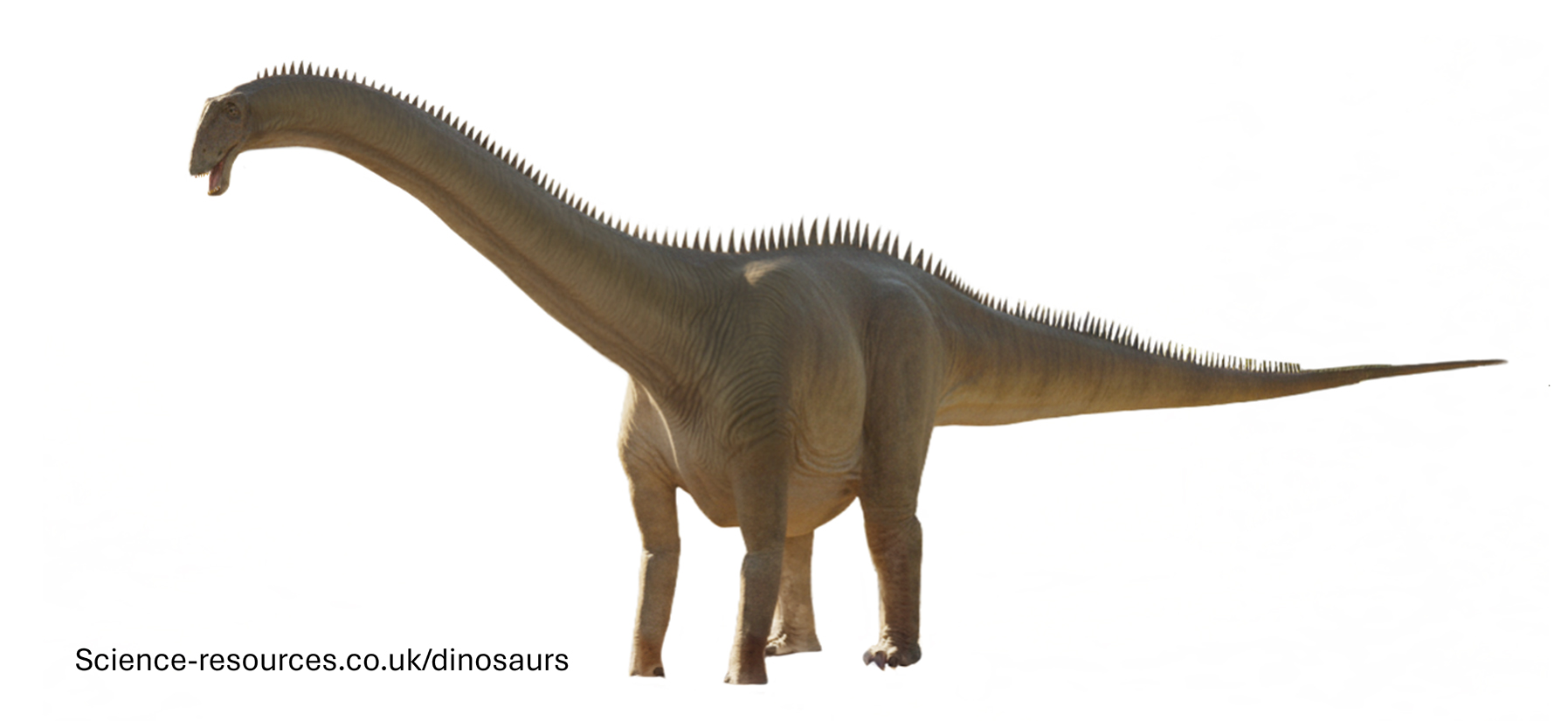You may also be intrested in: Free Dinosaur games
Dinosaur facts: Late Jurassic Period (163 to 145 million years ago)
You may also be intrested in: Free Dinosaur games
What is the Late Jurassic Period?
During the Late-Jurassic, several remarkable dinosaurs roamed the Earth. Here are some notable ones: A large carnivorous dinosaur, Allosaurus was a formidable predator with sharp teeth and strong claws. It measured about 8.5 metres in length and hunted other large dinosaurs. Known for its distinctive plates along its back and spiked tail, Stegosaurus was a large herbivorous dinosaur. It grew up to 9 metres in length and used its tail spikes for defense against predators. Diplodocus was one of the longest dinosaurs, measuring about 25 metres. This giant herbivore had a long neck and tail, which it used to reach high vegetation and defend itself. Known for its long neck and large size, Brachiosaurus was a giant herbivore that could grow up to 25 metres in length. It used its long neck to reach leaves high up in trees. Compsognathus was a small, agile carnivorous dinosaur, about 1 metre in length. It likely hunted small animals and insects, using its speed and agility to catch its prey. Apatosaurus, also known as Brontosaurus, was another massive herbivore that lived during the Late Jurassic Period. It measured up to 23 metres in length and had a long neck and tail, which it used to whip at predators for defense. Archaeopteryx is often considered the first bird and had both reptilian and avian features. It had feathers and could glide or fly short distances, making it a unique creature of its time. Camarasaurus was a large herbivorous dinosaur that reached up to 18 metres in length. It had a distinctive arched skull and strong limbs, enabling it to browse a variety of vegetation. Camptosaurus was a smaller herbivorous dinosaur, about 7 metres long, known for its flexible body and long hind legs. It likely fed on low-lying plants and could move quickly to escape predators. Ceratosaurus was a carnivorous dinosaur that measured about 6 to 7 metres in length. It had a prominent horn on its snout and powerful jaws, making it an effective predator. Dryosaurus was a small herbivorous dinosaur measuring around 3 to 4 metres in length. It had long legs and was likely a fast runner, helping it to evade predators. Juravenator was a small carnivorous dinosaur, about 75 centimetres long. It had sharp teeth and claws, and although its diet is not fully understood, it likely preyed on small animals. Kentrosaurus was a smaller relative of Stegosaurus, measuring about 5 metres in length. It had plates and spikes along its back and tail, which it used for defense against predators. Mamenchisaurus was known for its incredibly long neck, which measured nearly half of its total body length of around 25 metres. This herbivore likely fed on high vegetation. Ornitholestes was a small carnivorous dinosaur, about 2 metres long. It was agile and likely hunted small vertebrates, using its speed to catch its prey. Torvosaurus was a large carnivorous dinosaur, measuring about 10 metres in length. It had strong jaws and sharp teeth, making it one of the top predators of its time. Tuojiangosaurus was a stegosaurid dinosaur, about 7 metres long. It had spikes and plates along its back and tail, which provided protection from predators. Apart from dinosaurs, many other amazing animals shared the Late Jurassic world. The skies were home to pterosaurs like Pterodactylus, which had a wingspan of about 1.5 metres. These flying reptiles hunted for fish and insects. The oceans were filled with marine reptiles like plesiosaurs and pliosaurs. Plesiosaurs had long necks and flippers, allowing them to swim gracefully, while pliosaurs had shorter necks and powerful jaws, making them top marine predators. On land, early mammals like Megazostrodon started to diversify. These small, shrew-like creatures were among the first to show traits that would later define mammals, such as fur and live births. What Dinosaurs lived during the Late Jurassic Period?
Allosaurus
Stegosaurus
Diplodocus
Brachiosaurus
Compsognathus
Apatosaurus
Archaeopteryx
Camarasaurus
Camptosaurus
Ceratosaurus
Dryosaurus
Juravenator
Kentrosaurus
Mamenchisaurus
Ornitholestes
Torvosaurus
Tuojiangosaurus
What other animals lived during the Late Jurassic Period
In the Air
In the Ocean
On Land
Q1: What is the Late Jurassic Period?
A1: The Late Jurassic Period is the final phase of the Jurassic era, spanning from approximately 163 to 145 million years ago. It marks a time of significant growth and diversification of life forms.
Q2: What was the climate like during the Late Jurassic Period?
A2: The climate during the Late Jurassic was generally warm and humid, with lush forests and abundant vegetation.
Q3: What types of animals lived during the Late Jurassic Period?
A3: The Late Jurassic saw the emergence of various dinosaurs, marine reptiles, early mammals, and flying reptiles like pterosaurs.
Q4: What types of plants were common during the Late Jurassic Period?
A4: The vegetation included conifers, ferns, cycads, and ginkgoes, forming dense forests that supported diverse ecosystems.
Q5: What significant geological events occurred during the Late Jurassic Period?
A5: The Late Jurassic was marked by the continued breakup of the supercontinent Pangaea, leading to the formation of new landmasses and ocean basins.
Q6: What role did volcanic activity play during the Late Jurassic Period?
A6: Volcanic activity contributed to the environmental changes, affecting the atmosphere and ecosystems.
Q7: Why is the Late Jurassic Period important for understanding Earth's history?
A7: The Late Jurassic is crucial for understanding the evolution and diversification of dinosaurs, the breakup of Pangaea, and the ecological changes that shaped the future of life on Earth.Late Jurassic FAQ
You may also be intrested in:
Tags: How big were Dinosaurs, Dinosaurs size, where did Dinosaurs live, how tall are Dinosaurs, what does Dinosaur mean, Dinosaurs, Dinosaur facts





